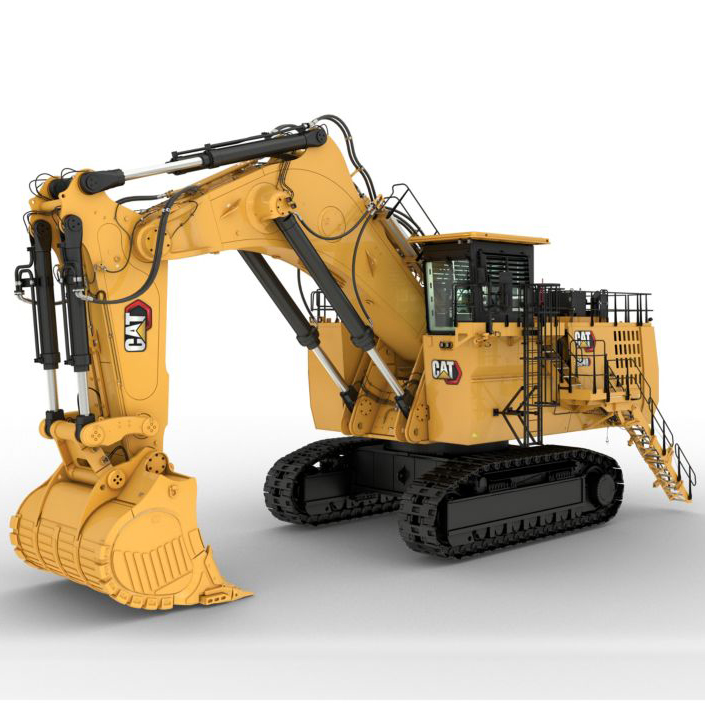
As a small crushing tool, the straight breaker with a drill rod diameter of 40mm is particularly effective in scenarios where space is limited, material strength is moderate, and precise operations are required. The following is an explanation from three aspects: scenario characteristics, operational advantages, and practical suggestions to help you further understand its efficient application scenarios:
1.Indoor/underground space demolition (such as basements, tunnels)
Scenario characteristics: low space height (such as floor height ≤ 3 meters), poor ventilation conditions, and the need to avoid damaging the original structure.
Breakage advantages:
The overall size of the breaker is small (length is usually ≤ 1.2 meters), and it can be vertically extended into narrow spaces (such as elevator shafts, pipeline tunnels) for operation.
The straight drill rod has a non-sway design and can be accurately crushed close to the wall and the ground. For example, when removing the concrete cushion layer of the basement, it avoids damaging the waterproof layer below.
Comparative advantages: Compared with manual crushing (such as pneumatic picks), the efficiency is increased by 5-8 times; compared with large breakers, it can reduce vibration damage to surrounding structures.
2.Nighttime construction in densely populated urban areas
Scenario characteristics: Residential areas, commercial centers, etc. have strict restrictions on noise and vibration, and nighttime operations are required.
Breakage advantages:
Operation noise ≤85 decibels (5 meters away from the equipment), which is lower than large breaker hammers (≥100 decibels), and meets the environmental protection standards for nighttime construction in most cities.
The vibration range is small (impact radius ≤2 meters), which can avoid damage to wall cracks, glass, etc. of adjacent buildings (such as residential buildings).
1.Rural roads/field road construction
Scenario characteristics: The base layer is mostly a mixed layer of clay and gravel, and the old road surface needs to be broken or the roadbed needs to be excavated.
Crushing advantages:
The crushing efficiency of compacted clay (hardness ≤ 20MPa) can reach 5-8 cubic meters/hour, which is better than equipment such as milling machines.
With a 3-ton excavator, it can be flexibly transferred in rural dirt roads without the need for special transport vehicles.
Typical applications: Breaking old cement concrete rural roads with a thickness of 100-150mm to prepare for the construction of new asphalt pavement.
2.Removal of precast concrete components
Scenario features: Removal of small concrete components such as precast stairs, balcony slabs, and walls, and the surrounding structures need to be retained.
Broken advantages:
The drill rod can be accurately positioned at the joints of the components (such as steel bar nodes), and the impact force can be used to cut off the concrete connection to avoid the risk of overall collapse.
The component blocks after crushing are highly intact (such as retaining steel bars), which is convenient for classification, recycling and reuse.
1.Protective demolition in cultural relics protection projects
Scenario characteristics: It is necessary to demolish the later added structures around the ancient buildings (such as concrete distribution rooms) and retain the cultural relics.
Crushing advantages:
Low vibration characteristics can reduce the disturbance to the foundation and walls of ancient buildings (vibration acceleration ≤ 0.5g).
High manual control accuracy, can gradually break the added structure through short pulse impact (single hit) to avoid damage to cultural relics.
2.Frozen soil/seasonal ice breaking
Scenario characteristics: During construction in the north in winter, it is necessary to break the surface frozen soil layer (thickness ≤ 300mm) or ice surface (such as temporary ice roads in rivers).
Breaking advantages:
The impact force is concentrated on the tip of the drill rod, which can quickly break the frozen soil blocks (the breaking speed is 3 times faster than that of a bulldozer).
The crushing depth of the ice layer can be controlled to avoid penetrating deep water bodies (such as ice breaking and water extraction operations).
1.Material adaptability judgment:
Prioritize crushing of concrete with sparse vertical reinforcement (such as non-load-bearing components) to avoid direct impact on dense reinforcement mesh (easy to damage the drill rod).
For soft rocks such as shale and sandstone, the “high frequency and low amplitude” striking mode (≥600 strikes per minute) can be used to improve crushing efficiency.
2.Key points for equipment debugging:
The hydraulic oil temperature must be maintained at 30-60℃ (too low will affect the power, too high will cause the seal to age).
Regularly check the gap between the drill rod and the bushing (normally ≤2mm). If the gap is too large, the accessories need to be replaced to avoid hydraulic energy leakage.
3.Safety operation specifications:
Install a protective baffle at the front end of the breaker to prevent the splashing of gravel and injuring people (especially in crowded areas).
When the crushing depth exceeds 500mm, use “step-by-step crushing” (layered breaking) to prevent the drill rod from sinking too deep and causing the hammer to get stuck.
| Scene Dimension | Typical features | Crushing effect advantage |
| Space limitations | Narrow areas with a width of ≤3 meters and a height of ≤4 meters (such as indoors and alleys) | The equipment can be moved in and out flexibly and can be operated at multiple angles |
| Material Strength | Concrete C30 and below, soft rock (compressive strength ≤30MPa), hard soil/frozen soil | Impact force matches material strength, with optimal efficiency and economy |
| Environmental requirements | Noise ≤ 90 decibels, vibration ≤ 1g, surrounding structures need to be protected (such as cultural relics, pipelines) | Low noise, low vibration, strong controllability |
| Operation scale | Single crushing volume ≤ 20 cubic meters (such as local repairs, small demolitions) | Low equipment investment cost and high transition efficiency |
Contact With Us
If you have any questions please fell free to contact with us.